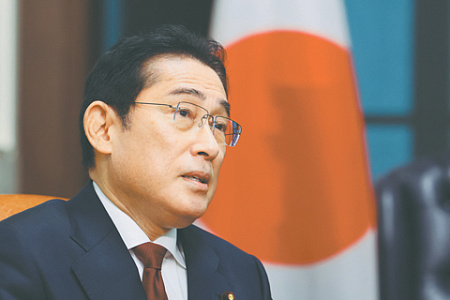The Ministry of Defense puts on a counter-force strike in the confrontation with ChinaJapanese Prime Minister Fumio Kishida, during a speech to the budget commission of the lower house of the Japanese parliament, announced Tokyo's intention to purchase a batch of Tomahawk missiles of the latest modification from the United States.
The contract is planned to be concluded in fiscal year 2023 under the US military sales program (foreign military sales, FMS). The main supplier will be the American military industrial corporation Raytheon. In total, as previously reported, Japan plans to purchase about 500 such missiles.
Fumio Kishida stressed that the acquisition of this type of missiles is considered a measure to increase the country's defense capability. He believes that the Japanese Self-Defense Forces should have "means of striking, the range of which will exceed the range of the attacking means of the alleged enemy."
Last year, Japan decided on a major increase in the defense budget. The purchase of missile weapons was identified as one of the main items of increase in military spending. It is planned to allocate at least $1.6 billion for these purposes. At the same time, in addition to purchasing cruise missiles abroad, Japan is also going to actively produce its own systems of a similar class – primarily Type 12 air-based missiles.
In Japan's military construction programs, cruise missiles have traditionally been considered part of the doctrine of prohibition of access and maneuver (Anti-Access/Area Denial or A2/AD – terminology adopted in accordance with US Armed Forces standards). This defensive strategy involves the use of high-precision weapons to deter the deployment of groups of troops of a likely enemy in the coastal waters of Japan.
According to this doctrine, anti-ship and anti-aircraft missiles of limited range are placed on coastal missile systems, surface ships, as well as jet fighters and maritime patrol aircraft. In the event of a military conflict, these missile systems are capable of causing unacceptable damage to enemy aircraft and fleets that have invaded the area of operation of these weapons.
At the same time, the limited range of anti-ship and anti-aircraft missiles usually significantly limits or completely excludes the possibility of their use for offensive purposes. Which corresponds to the constitutional restrictions imposed on the Japanese Self-Defense Forces.
However, according to the military-political leadership of Japan, in recent years, the growing asymmetry between the military capabilities of the SS and the People's Liberation Army of China (PLA) reduces the expediency of the Japanese defensive strategy from the point of view of military-strategic and economic considerations.
The capabilities of the PLA naval forces and aviation allow them to carry out massive bombing of Japanese islands over long distances, being far beyond the range of coastal anti-ship complexes and air defense systems of the SS.
Moreover, the PLA's own A2/AD means allow Beijing to deploy its forces in the theater of operations, minimizing the risks of counteraction from the Japanese navy and aviation. In addition, the gap in military and economic capabilities does not allow Japan to support the purchase of anti-missiles in volumes comparable to the growth of the Chinese strike potential.
In these circumstances, the new edition of the National Security Strategy of Japan, published on December 22 last year, highlights the need for an active response to regional security challenges as a priority of defense policy. In the field of military construction, this means a gradual transition to the concept of a counter-force strike. This approach involves the deployment of its own arsenals of cruise and, in the future, long-range ballistic missiles capable of attacking targets deep in China.
It is assumed that the threat of such strikes may act as a deterrent during the escalation of a possible conflict between Japan and China. Although in practice there is also a reverse risk: the deployment of symmetrical strike potentials with insufficient effectiveness of missile defense systems creates mutual incentives for preemptive missile strikes.
Japanese periodicals also report that the country's Ministry of Defense plans to begin construction of 10 new warehouses for storing long-range missiles and other ammunition in fiscal year 2023.
The Yomiuri shimbun newspaper clarifies that four new warehouses will appear at the facilities of the Self-Defense Forces in Oita and Aomori prefectures. The remaining six (or more) new warehouses will appear at other facilities of the land and Sea Self-Defense Forces of Japan.
Also, the new facilities will be used as points for transporting ammunition to the front line in the event of a military conflict. It is expected that about $43.6 million will be allocated for construction. It can be assumed that this step will mark the beginning of a larger construction process throughout the country: by 2035, the Japanese authorities plan to build a total of about 130 military depots.
Tracking the military construction in Japan, it can be reasonably argued that the so-called active defense of island territories, adopted by the Japanese state and military leadership as a strategy, is gaining clearer outlines.
The military budget additionally includes financing for the export of a batch of inconspicuous F-35 fighters, the purchase of new guided missile destroyers, as well as the modernization of helicopter carriers to ensure the flights of these fighters.
Of particular note is the formation of the first high-speed maneuverable amphibious assault brigade since 1945. The main base of the new formation was the island of Okinawa. This is dictated by the strategy of active defense "to conduct military operations in remote island territories."
Vasily Ivanov

